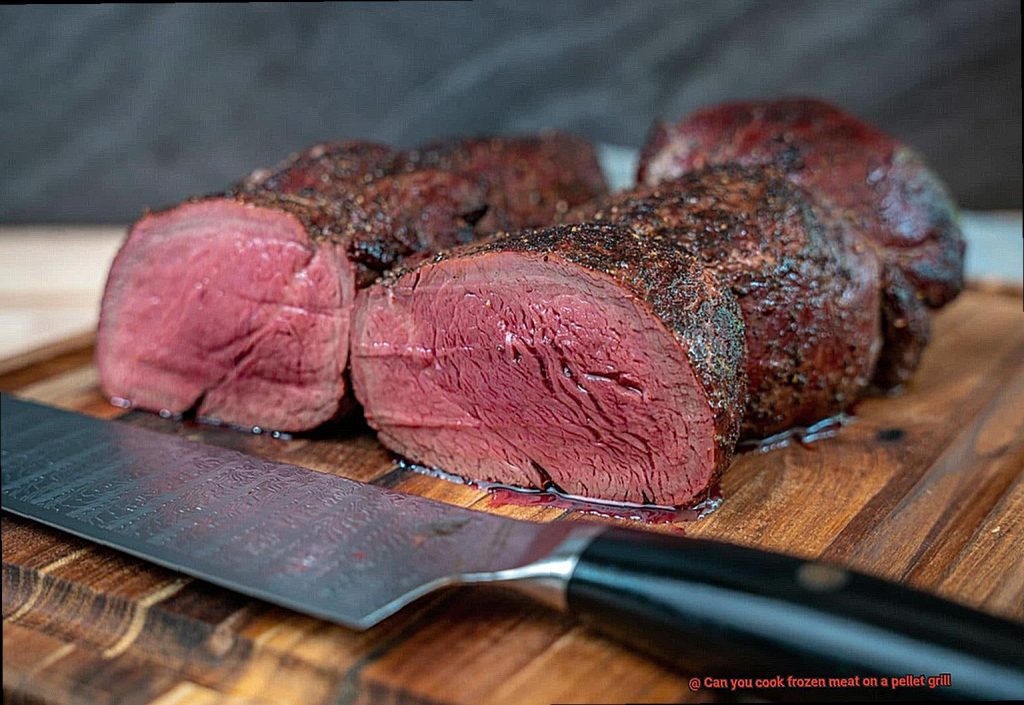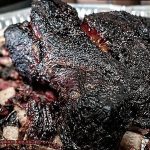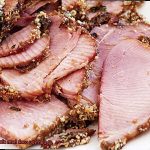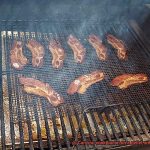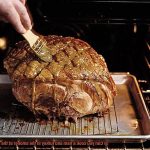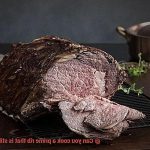Contents
Are you a die-hard fan of pellet grilling?
If so, then you’re probably no stranger to the mouth-watering, smoky flavors that it can bring out in your meats. But what happens when you’re pressed for time and don’t have the luxury of defrosting your meat before cooking it on your pellet grill?
You might be left wondering: ‘Can you cook frozen meat on a pellet grill?’ The good news is that yes, you can.
However, there are a few critical things you need to keep in mind before tossing that block of frozen meat onto your sizzling hot grill. Cooking frozen meat on a pellet grill isn’t as straightforward as cooking thawed meat.
Nevertheless, with the right techniques and attention to detail, it’s still possible to achieve a juicy, perfectly cooked cut of meat. In this blog post, we’ll explore all the essential factors that come into play when grilling frozen meat on a pellet grill.
We’ll cover everything from selecting the ideal cut of meat to ensuring optimal cooking temperatures. Whether you’re an expert at using your pellet grill or just starting out, we’ve got you covered.
Keep reading to learn everything there is to know about cooking frozen meat on a pellet grill – and get ready to impress your guests with some seriously scrumptious results.
What is a Pellet Grill?
A pellet grill, also known as a pellet smoker or a pellet barbecue, is an outdoor cooking appliance that uses wood pellets to fuel the fire and cook food. These pellets are made from compressed sawdust and wood shavings, and come in a variety of flavors such as hickory, mesquite, applewood, and cherry.
But what sets a pellet grill apart from other outdoor cooking appliances? For starters, the process by which it cooks your food is truly unique. Pellet grills work by feeding the pellets into a hopper at the back of the grill. From there, an auger pulls the pellets into a burn pot where they ignite and create smoke. The smoke and heat are then circulated around the food by a fan or blower, cooking it to perfection. This results in food with a rich, smoky flavor that’s hard to achieve with other cooking methods.
Pellet grills are also incredibly versatile. They can be used for grilling, smoking, roasting, baking, and even braising. Whether you want to cook a juicy steak or slow-smoke a rack of ribs, a pellet grill can handle it all. Plus, many models feature digital controllers that allow you to set the temperature and cooking time with precision. This means you can achieve perfect results every time, without any guesswork.
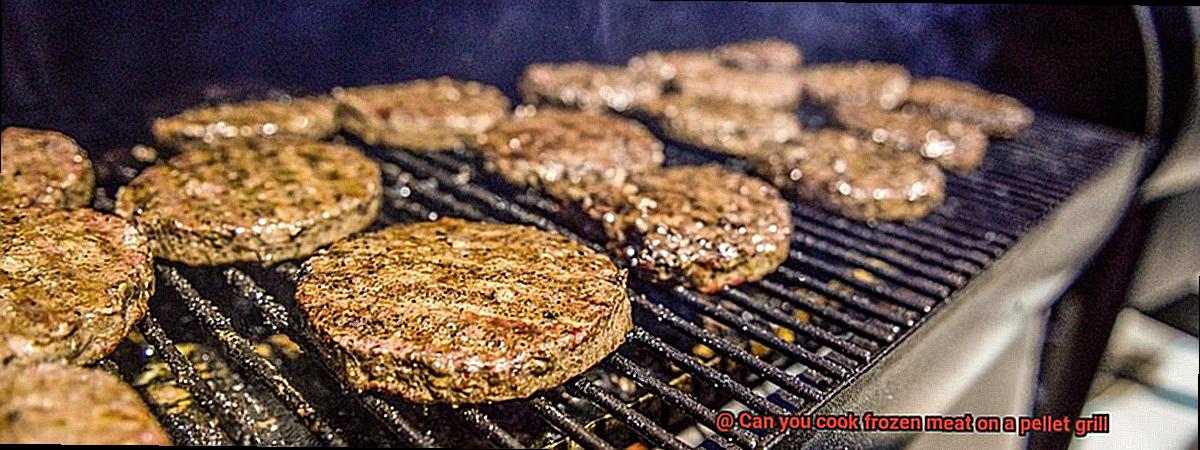
Now, let’s address the age-old question: can you cook frozen meat on a pellet grill? The short answer is yes – but there are some important things to keep in mind. First and foremost, it is essential to make sure your meat is completely thawed before cooking. Thawing your meat properly will ensure that it cooks evenly and thoroughly. If you try to cook frozen meat directly on the grill, the outer layer may char while the inner part remains raw.
The best way to thaw frozen meat is to do so slowly in the refrigerator. This process can take anywhere from 24 to 48 hours, depending on the size of the meat. Once thawed, be sure to pat the meat dry with paper towels to remove any excess moisture.
Is it Possible to Cook Frozen Meat on a Pellet Grill?
While it is technically possible, there are several reasons why it’s not recommended. As an expert in this topic, let me explain.
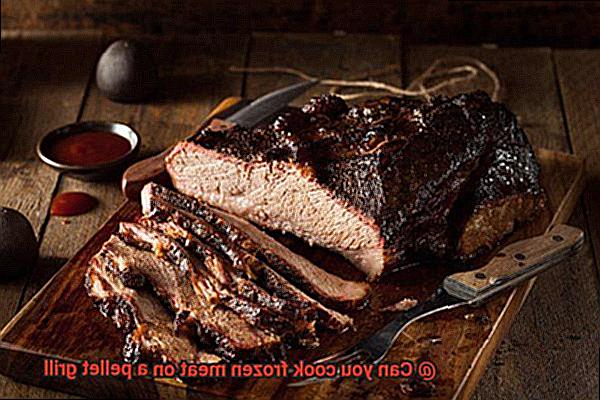
Firstly, cooking frozen meat on a pellet grill can result in uneven cooking. The outer layer of the meat may become overcooked or burnt while the inside remains raw or undercooked. This is because frozen meat takes longer to cook than thawed meat, which can result in overcooking the exterior.
Secondly, cooking frozen meat on a pellet grill can be dangerous. When meat is frozen, any bacteria present on its surface becomes inactive. However, as the meat thaws and reaches room temperature, the bacteria can become active again and multiply quickly. This can lead to food poisoning if the meat is not cooked thoroughly enough to kill off all the bacteria.
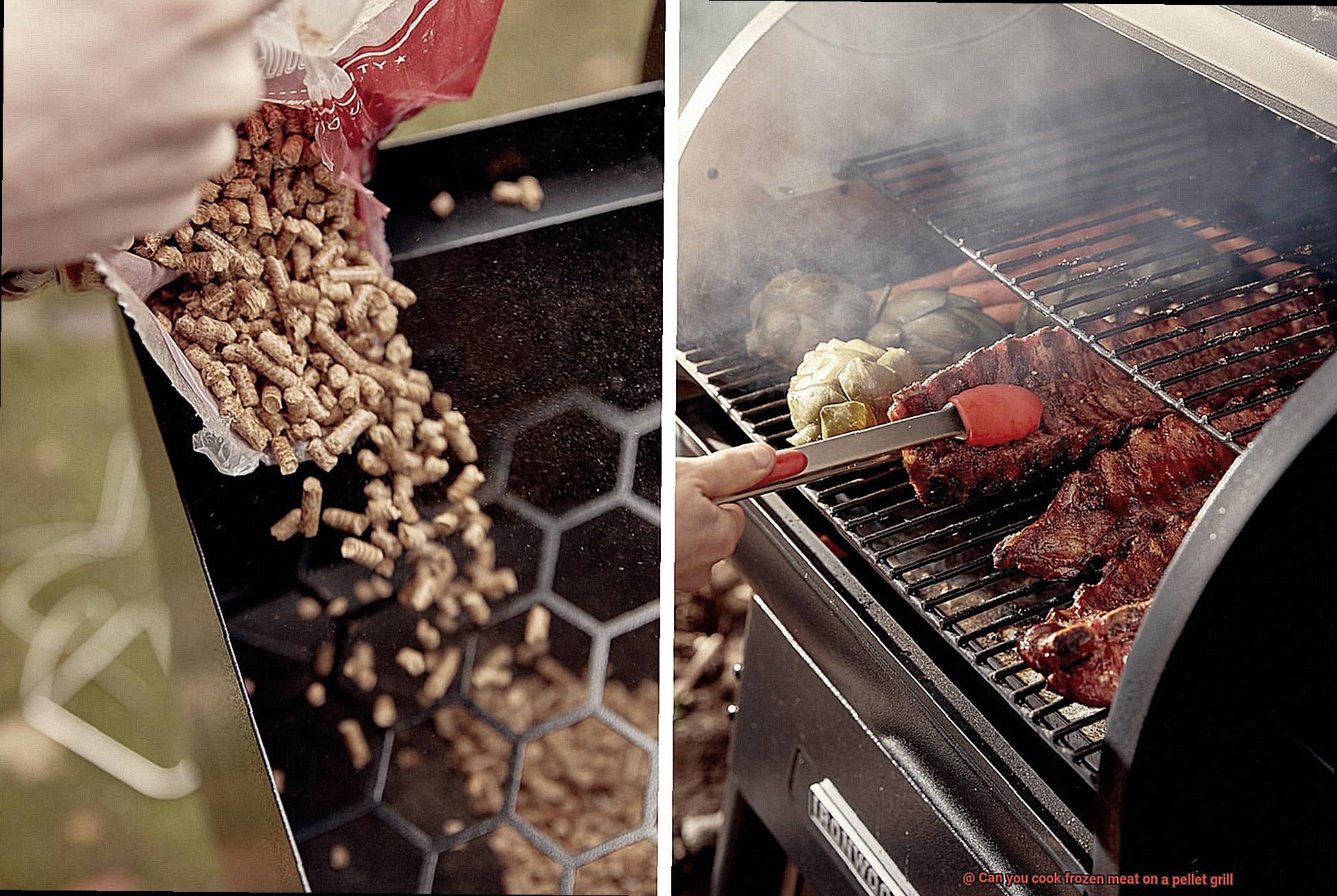
Lastly, cooking frozen meat on a pellet grill can damage your grill itself. The sudden change in temperature when placing frozen meat on a hot grill can cause the grill grates to warp or crack.
To ensure perfectly cooked and safe results every time while also protecting your pellet grill from damage, it’s essential to thaw the meat thoroughly in the refrigerator before grilling. Here are some tips for thawing:
- Plan ahead and give yourself enough time for the meat to thaw completely
- Place the frozen meat in a sealed plastic bag and submerge it in cold water until thawed
- Use the defrost setting on your microwave if you’re short on time
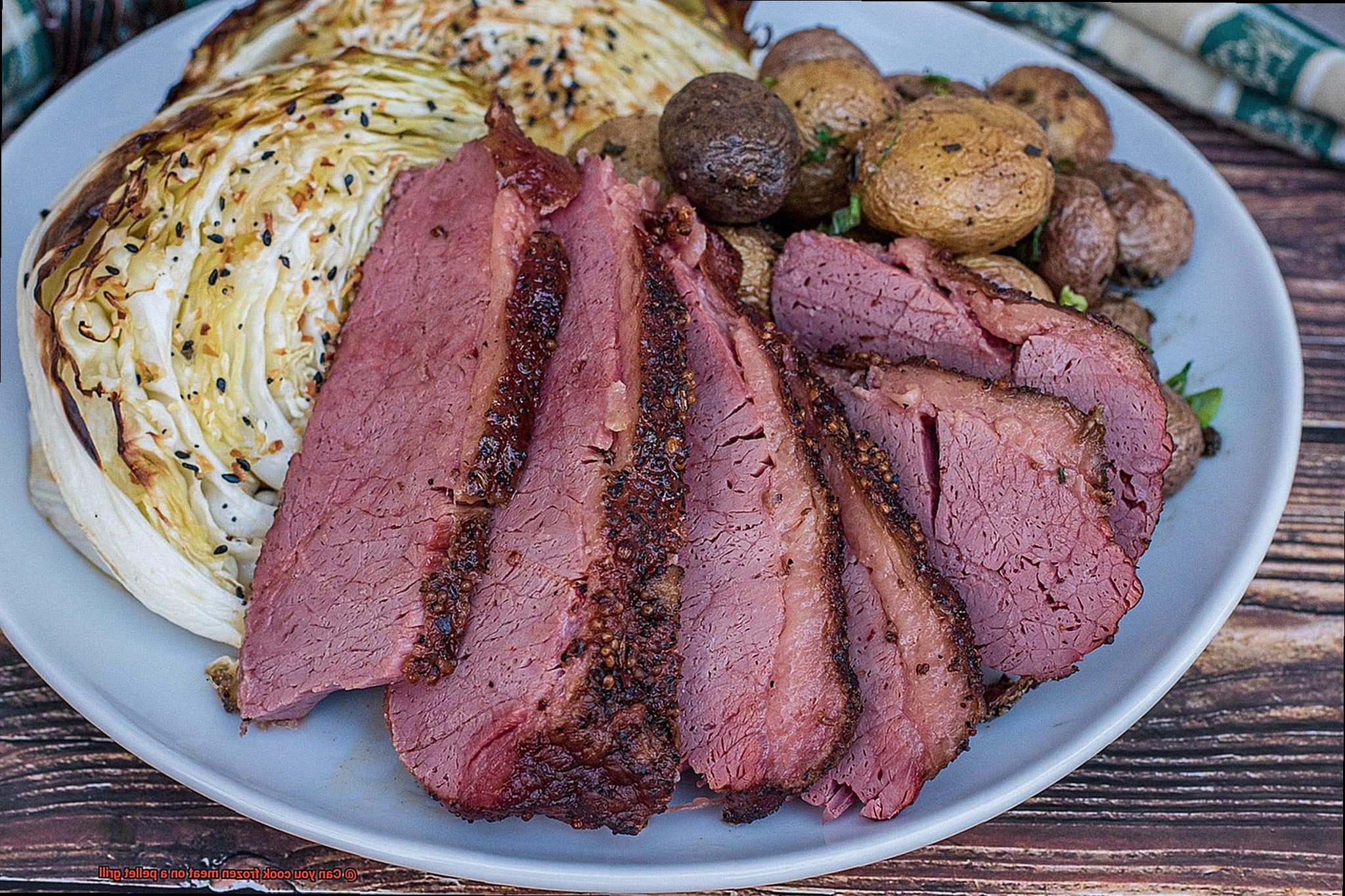
The Benefits of Cooking Frozen Meat on a Pellet Grill
Fortunately, there is a solution that can make your grilling experience more convenient, practical, and enjoyable – cooking frozen meat on a pellet grill.
One of the major benefits of cooking frozen meat on a pellet grill is convenience. With this method, there’s no need to worry about defrosting your meat beforehand. Simply take it out of the freezer and put it directly onto the grill. It’s a hassle-free and spontaneous grilling experience.
Another advantage of cooking frozen meat on a pellet grill is its time-saving benefits. Unlike defrosted meat that can take longer to cook evenly throughout, frozen meat takes longer to cook overall, resulting in shorter cooking times. With temperature control systems found on most pellet grills, maintaining a consistent heat level is easy, which ensures that your meat is cooked evenly and thoroughly.
Lastly, cooking frozen meat on a pellet grill can result in improved taste and texture. The slow and even cooking process allows the meat to develop flavors and retain moisture, resulting in a juicier and more flavorful end product. Plus, with the smoky flavor from the pellets used in the grill, you’ll get an added layer of depth to your meat’s taste.
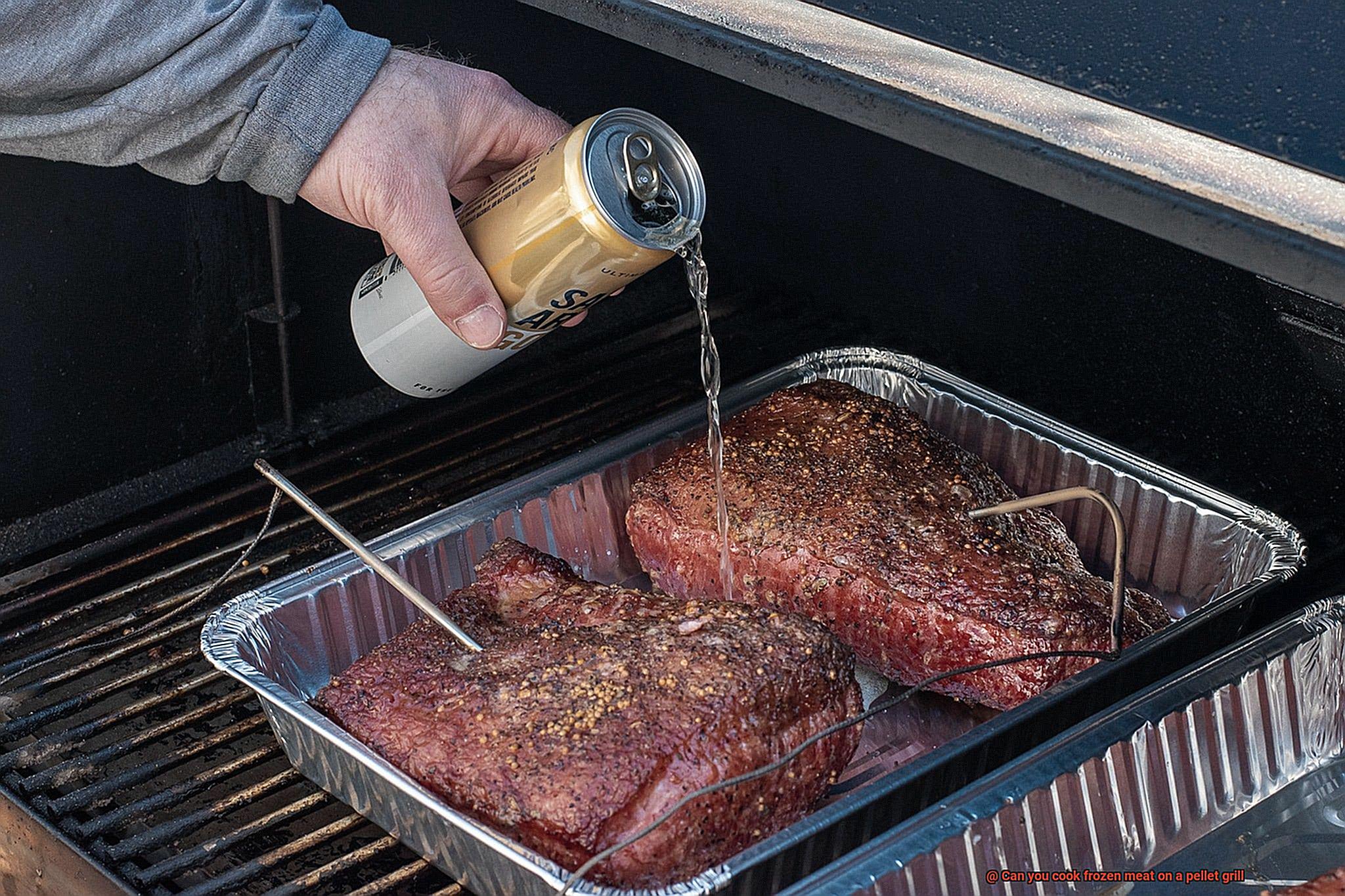
The Risks of Cooking Frozen Meat on a Pellet Grill
Grilling is an art form that requires patience, skill, and a bit of experimentation to perfect. But what about cooking frozen meat on a pellet grill? It may seem like a time-saving hack, but there are significant risks associated with taking this shortcut.
One of the main risks of cooking frozen meat on a pellet grill is uneven cooking. Frozen meat takes longer to cook than thawed meat, and this can result in the outside of the meat burning or charring while the inside remains raw. This can leave you with an unpleasant texture and flavor that can ruin your meal.
Another risk is bacteria growth. When you cook frozen meat, the outside may reach a safe temperature while the inside remains too cold for too long, creating an environment in which bacteria can thrive. This increases the risk of foodborne illness and can be very dangerous.
In addition to these risks, cooking frozen meat on a pellet grill can also impact the overall performance of your grill. The excess moisture from the frozen meat can cause flare-ups that reduce your grill’s efficiency, leading to longer cooking times and potentially damaging your grill.
So what’s the best solution? It’s highly recommended to thaw your meat thoroughly before cooking on a pellet grill. This ensures even cooking and reduces the risk of foodborne illness. However, if you must cook frozen meat on a pellet grill, there are some precautions you should take.
Firstly, use a lower temperature setting to avoid burning or charring the outside while the inside remains raw. Secondly, monitor the internal temperature of the meat with a meat thermometer to ensure that it reaches a safe temperature throughout. Lastly, allow extra cooking time to make sure that the meat is cooked thoroughly and safely.
How to Prepare Frozen Meat for Grilling on a Pellet Grill
Grilling frozen meat on a pellet grill can be a daunting task, but it’s not impossible. With the right steps and techniques, you can achieve delicious and juicy results. Here are five crucial steps to prepare frozen meat for grilling on a pellet grill:
Thawing the Meat
The first step is to thaw the meat completely. The best way to thaw frozen meat is to do so slowly in the refrigerator for several hours or overnight. Avoid thawing meat at room temperature or in the microwave, as this can lead to uneven cooking and potential foodborne illness. Once the meat is thawed, pat it dry with paper towels to remove excess moisture.
Seasoning the Meat
Seasoning the meat is crucial for adding flavor and tenderness. You can use a dry rub or marinade of your choice. For best results, let the meat sit in the seasonings for at least 30 minutes before grilling. This will allow the flavors to penetrate into the meat and make it more tender.
Preheating the Grill
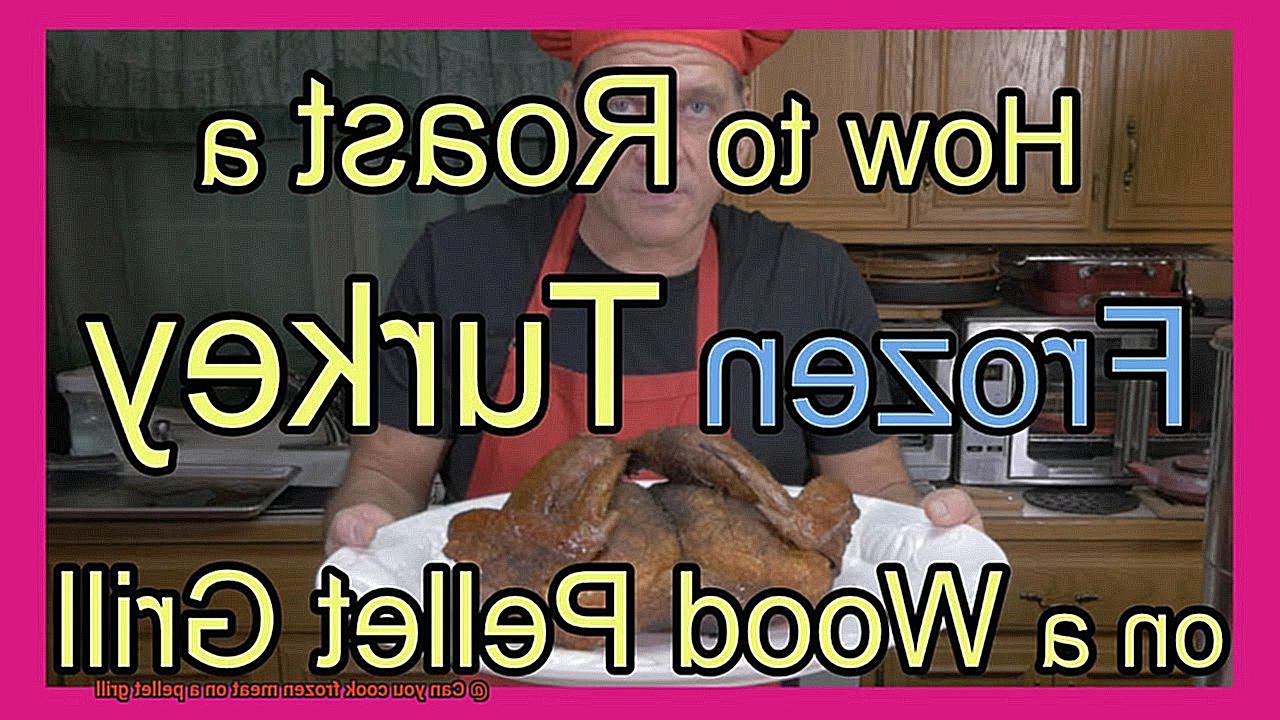
Before placing the meat on the grill grates, preheat the grill to the desired temperature. This will ensure even cooking and prevent sticking. You can also brush some oil onto the grates to prevent sticking.
Using a Meat Thermometer
To ensure that your meat is safe for consumption, it’s important to use a meat thermometer to check its internal temperature. The USDA recommends cooking beef, pork, veal, and lamb cuts to an internal temperature of 145°F and poultry to 165°F. Insert the thermometer into the thickest part of the meat, away from any bones.
Leaving Space
When placing the meat on the grill, leave enough space between each piece so that they cook evenly and do not touch each other. This will ensure that they cook evenly and don’t stick together. Avoid overcrowding the grill as this can lead to uneven cooking.
Tips for Cooking Frozen Meat on a Pellet Grill
We’ve got you covered with these five tips to ensure your frozen meat is cooked to perfection on the pellet grill.
Thawing the Meat
If possible, thaw the meat before cooking it on a pellet grill. But if you’re short on time, increase the cooking time by 50% to ensure that the meat cooks thoroughly.
Seasoning
Since frozen meat takes longer to cook, it’s important to use plenty of seasoning to avoid a bland taste. Add an ample amount of salt and pepper, along with any other seasonings you prefer.
Preheating the Grill
Preheating the pellet grill is essential when cooking frozen meat. Set the temperature to high and let it preheat for at least 15-20 minutes before placing the meat on the grill.
Searing
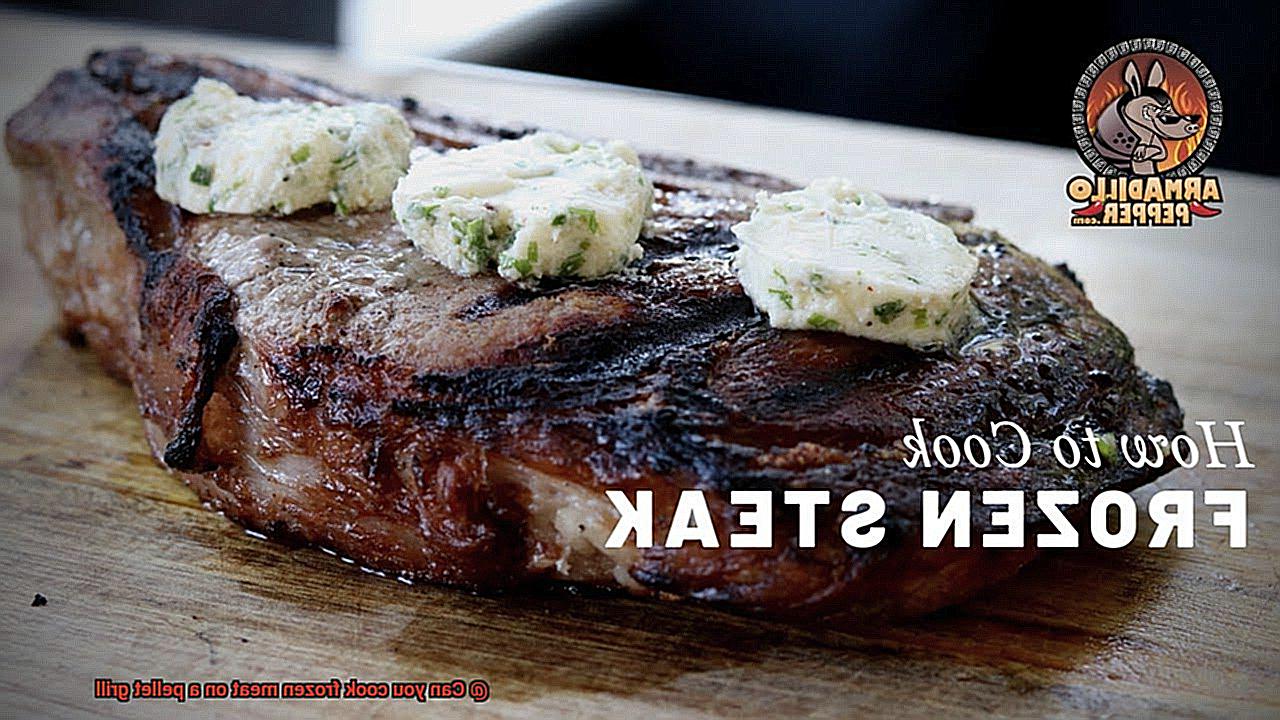
Searing your frozen meat is an excellent way to lock in the flavors and juices. Place the meat directly over the hot flames for 2-3 minutes per side before transferring it to the cooler side of the grill.
Using a Meat Thermometer
A good quality meat thermometer is crucial when cooking frozen meat on a pellet grill. This will help you monitor the internal temperature of the meat and ensure that it’s cooked all the way through.
It’s important to note that not all types of meat are suitable for cooking from frozen on a pellet grill. Thinner cuts like chicken breasts or pork chops may cook more evenly from frozen than thicker cuts like beef roasts.
What Temperature Should I Cook Frozen Meat On A Pellet Grill?
Don’t let the idea of cooking frozen meat intimidate you. With the right temperature and a bit of patience, you can achieve delicious, evenly cooked results every time.
First things first – temperature is key when it comes to cooking frozen meat on a pellet grill. Cooking frozen meat at the wrong temperature can result in uneven cooking and a less-than-ideal final product. To ensure that your frozen meat cooks evenly and reaches a safe internal temperature, set your pellet grill to 25-50 degrees Fahrenheit higher than what you would normally cook the same cut of meat if it were thawed.
For example, if you’re planning to cook a thawed steak at 350 degrees Fahrenheit, you’ll want to set the temperature to 375-400 degrees Fahrenheit when cooking a frozen steak. This might seem like a big jump, but trust us – frozen meat takes longer to cook and needs a higher temperature to ensure that it cooks all the way through.
It’s also important to use a good quality meat thermometer to check the internal temperature of your meat. This is crucial when cooking any kind of meat on any type of grill. The USDA recommends cooking beef, pork, lamb, and veal steaks, chops, and roasts to an internal temperature of 145 degrees Fahrenheit, while ground meats should be cooked to 160 degrees Fahrenheit. Poultry should be cooked to an internal temperature of 165 degrees Fahrenheit.
In addition to adjusting the temperature and using a meat thermometer, keep in mind that cooking times will be longer when cooking frozen meat on a pellet grill. Depending on the size and thickness of the cut of meat, it may take anywhere from 1.5 to 2 times longer than it would if the meat were thawed.
How to Monitor the Internal Temperature of the Frozen Meat?
Cooking frozen meat on a pellet grill can be tricky, but it is not impossible. To ensure that your meat is cooked thoroughly and safely, you need to monitor its internal temperature. Here are some tips on how to do that effectively.
Thaw Your Meat Slowly and Safely
Thawing your frozen meat safely is the first step to ensuring that it is cooked thoroughly and safely. The best way to thaw meat is by placing it in the refrigerator for up to 48 hours before cooking. This method ensures that the meat thaws slowly and does not promote bacterial growth. Once the meat is thawed, make sure to pat it dry with paper towels to remove any excess moisture.
Choose the Right Thermometer
To monitor the internal temperature of your frozen meat, you need a reliable meat thermometer. A digital probe thermometer is one of the best options as it can accurately read the temperature of the meat from its center. Make sure to insert the thermometer into the thickest part of the meat, away from any bones.
Adjust Cooking Time
Frozen meat requires more cooking time compared to thawed meat as it needs time to defrost and cook thoroughly. Therefore, it is recommended to add an extra 50% of cooking time when cooking frozen meat on a pellet grill. This extra time will ensure that the meat is cooked thoroughly and reaches the desired internal temperature.
Monitor Internal Temperature
Don’t rely solely on cooking time or temperature guidelines when cooking frozen meat on a pellet grill. Always use a thermometer to check the internal temperature of the meat and adjust your cooking time accordingly. The USDA recommends cooking frozen poultry until it reaches an internal temperature of 165°F (74°C) and beef, pork, lamb, and veal until it reaches 145°F (63°C).
Let It Rest
Once you have removed the frozen meat from the pellet grill, let it rest for at least three minutes before serving. This will allow the internal temperature to continue rising and distribute evenly throughout the meat.
rWdfJNna6nw” >
Conclusion
In conclusion, cooking frozen meat on a pellet grill is not only possible, but it can also be a time-saving option for busy home chefs. However, before you throw that frozen steak on the grill, there are some important things to consider.
First and foremost, thawing your meat properly is crucial for even cooking and reducing the risk of foodborne illness. While it may be tempting to skip this step for convenience, it’s important to keep in mind the potential risks associated with cooking frozen meat.
When grilling frozen meat on a pellet grill, adjusting the temperature and cooking time accordingly is key. This will ensure that your meat cooks evenly without any raw or overcooked spots. Using a high-quality meat thermometer is also essential for monitoring the internal temperature of your meat and ensuring that it reaches a safe temperature.
With patience and attention to detail, you can achieve mouth-watering results when grilling frozen meats on your pellet grill. So go ahead and experiment with different cuts – just remember to take all necessary precautions to ensure delicious and safe results every time.
In summary, while cooking frozen meat on a pellet grill requires some extra effort and attention, the end result can be well worth it.

